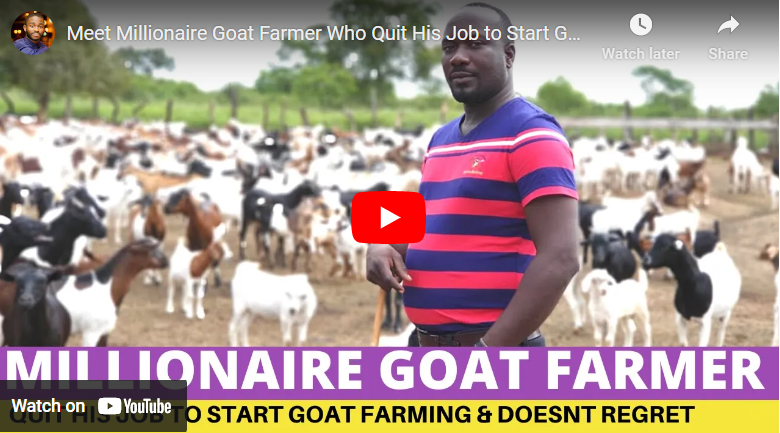Agriculture has been a crucial part of the UK’s economy and history for centuries. From the vast fields of wheat in the east to the rolling hills of grazing land in the west, farming has played a significant role in shaping the country’s landscape and culture.
Some of the biggest and largest farms in the United Kingdom include Elveden Estate, Woburn, Abbey Estate, Castle Howard Estate, Chatsworth Estate, Holkham Estate, Thoresby Estate, Sandringham Estate, Bolton Abbey Estate, Badminton Estate, Longleat Estate, Blenheim Palace Estate, and Harewood House Estate.
In recent times, there has been a consolidation of farms, leading to larger and more efficient operations.
In this article, we will take a look at the 12 largest farms in the UK, examining their size, location, and the types of crops or livestock they produce. We will also delve into the history of these farms and the challenges and opportunities they face in today’s agricultural industry.
12 Largest Farm In The UK
The United Kingdom is indeed home to several large farms spread across its picturesque landscapes.
These farms encompass vast acreage, contributing significantly to the country’s agricultural sector. Here is a brief introduction to the 12 largest farms in the UK:
#1. Elveden Estate
Situated in Suffolk
Size: 22,500-acre country estate
Situated in Suffolk, the Elveden Estate spans a vast 22,500 acres, with a significant portion of the land dedicated to farmland, over 10,000 acres is farmland.
It has a rich history and is known for its commitment to sustainable farming practices. The estate specializes in arable farming, with crops including cereals, potatoes, onions, and carrots reflecting the diverse farming activities conducted on the estate.
Elveden Estate also operates its own butchery, farm shop, and restaurant, offering visitors a taste of their high-quality produce.
Read Also: Top 10 Farm Machinery Show UK
#2. Woburn Abbey Estate
Situated in Bedfordshire
Size: Covers around 22,500 acres
Covering approximately 22,500 acres in Bedfordshire, the Woburn Abbey Estate allocates a significant portion of its land for agricultural purposes.
It is well-known for its picturesque deer park and diverse agricultural operations. The estate engages in arable farming, livestock rearing, and forestry.
The fertile land is used for growing various crops, including wheat, barley, oilseed rape, and maize. Woburn Abbey Estate also manages a herd of deer, contributing to the preservation of local wildlife and biodiversity.
Read Also: Top Richest Poultry Farmers in Tanzania
The fertile land within the estate is utilized for growing various crops such as wheat, barley, oilseed rape, and maize, contributing to the agricultural productivity and sustainability of the estate.
#3. Castle Howard Estate
Situated in North Yorkshire
Size: Approximately 13,000 acres
Nestled in the scenic landscapes of North Yorkshire, Castle Howard Estate spans approximately 13,000 acres of land.
It encompasses a diverse range of features, including farmland, woodlands, and meticulously maintained gardens.
The estate is renowned for its iconic stately home, Castle Howard, which serves as a prominent historical and cultural attraction.
Read Also: Top 5 Richest Poultry Farmers in Zimbabwe
In addition to its architectural splendor, Castle Howard Estate engages in agricultural activities, such as crop cultivation and livestock farming, contributing to the local economy and preserving the rural character of the region.
#4. Chatsworth Estate
Situated in Derbyshire
Size: Comprises over 13,000 acres
Situated in the picturesque county of Derbyshire, the expansive Chatsworth Estate covers over 13,000 acres of land.
It is widely recognized for its magnificent stately home, Chatsworth House, which attracts visitors from all over the world.
Read Also: Top 10 Biggest Fish Farm Projects in Ghana
The estate boasts breathtaking gardens, extensive parkland, and various agricultural enterprises. Chatsworth Estate is actively involved in farming activities, including arable farming, livestock rearing, and forestry.
The agricultural operations not only support the estate but also play a crucial role in the regional economy and the preservation of the local countryside.
#5. Holkham Estate
Located in Norfolk
Size: Covers around 25,000 acres
Situated in the picturesque county of Norfolk, Holkham Estate sprawls across approximately 25,000 acres of land.
The estate is widely recognized for its thriving farming operations, which encompass both arable land and livestock.
Read Also: Top 12 Biggest Fish Farms in UK
The fertile soil of Holkham Estate supports the cultivation of various crops, including wheat, barley, sugar beet, and vegetables.
The estate maintains a herd of cattle and sheep, contributing to the local agricultural industry. Holkham Estate’s commitment to sustainable farming practices and conservation initiatives has earned it a reputation as a leader in the field.
#6. Thoresby Estate
Found in Nottinghamshire
Size: Encompasses approximately 10,000 acres
Located in Nottinghamshire, Thoresby Estate covers an expansive area of approximately 10,000 acres.
Read Also: Top 8 Biggest Agricultural Companies In USA
The estate is known for its diverse landscape, which includes agricultural land and woodlands. The fertile agricultural land is utilized for various farming activities, such as crop cultivation, with crops like cereals and oilseed rape being grown.
Thoresby Estate also manages woodlands, contributing to sustainable forestry practices and the preservation of natural habitats.
With its combination of agricultural and environmental stewardship, Thoresby Estate showcases the harmonious coexistence of farming and conservation.
#7. Sandringham Estate
Situated in Norfolk
Size: Spans over 20,000 acres
Nestled in the scenic county of Norfolk, Sandringham Estate stretches across an impressive expanse of over 20,000 acres.
It holds significant historical and cultural importance as the country retreat of the British royal family.
The estate encompasses various features, including farmland, woodlands, gardens, and the iconic Sandringham House.
Sandringham Estate engages in agricultural practices, with a focus on arable farming, livestock rearing, and forestry.
The estate’s farming operations contribute to the local economy and showcase sustainable agricultural practices.
#8. Bolton Abbey Estate
Situated in North Yorkshire
Size: Covers around 12,000 acres
Situated amidst the picturesque landscapes of North Yorkshire, Bolton Abbey Estate covers approximately 12,000 acres of land.
The estate showcases a diverse range of natural features, including farmland, moorland, woodlands, and the ruins of Bolton Priory.
Agriculture plays a vital role in the estate’s operations, with arable farming and livestock rearing being prominent activities.
The fertile farmland supports the cultivation of crops, while the moorland and woodlands are managed to promote biodiversity and conservation efforts.
Bolton Abbey Estate offers a beautiful blend of agriculture, natural landscapes, and cultural heritage.
#9. Badminton Estate
Situated in Gloucestershire
Size: it comprises over 5,000 acres
Located in the picturesque county of Gloucestershire, Badminton Estate covers over 5,000 acres of land.
The estate is notable for its thriving agricultural operations and equestrian events, most notably the prestigious Badminton Horse Trials.
The farmland on the estate is utilized for arable farming, livestock rearing, and the cultivation of various crops.
Badminton Estate’s commitment to sustainable farming practices and its contribution to the equestrian community have solidified its reputation as a prominent agricultural and sporting destination.
#10. Longleat Estate
Situated in Wiltshire
Size: Spans approximately 9,000 acres
Situated in the charming county of Wiltshire, Longleat Estate spans approximately 9,000 acres of land.
It is renowned for its magnificent stately home, Longleat House, and its diverse range of attractions, including a safari park.
The estate also engages in farming activities across its expansive land. From arable farming to livestock rearing, Longleat Estate utilizes its fertile land to produce crops and support animal husbandry.
The estate’s farming activities complement its cultural offerings, providing visitors with a unique blend of heritage, wildlife, and agricultural experiences.
#11. Blenheim Palace Estate
Located in Oxfordshire
Size: Covers over 12,000 acres
Nestled in the picturesque county of Oxfordshire, Blenheim Palace Estate encompasses a vast expanse of over 12,000 acres.
The estate is renowned for its rich history, stunning architecture, and expansive parkland. It is home to the magnificent Blenheim Palace, a UNESCO World Heritage Site.
The estate boasts diverse land use, including agricultural land used for arable farming and livestock rearing.
The farming activities on Blenheim Palace Estate contribute to the local economy and demonstrate a harmonious integration of heritage, natural landscapes, and agricultural practices.
#12. Harewood House Estate
Situated in West Yorkshire
Size: Around 4,000 acres
Situated in the beautiful county of West Yorkshire, Harewood House Estate covers approximately 4,000 acres of land.
The estate is distinguished by its grand stately home, Harewood House, and its meticulously maintained gardens.
Alongside its cultural and historical significance, Harewood House Estate is actively involved in farming operations.
The estate’s farmland supports a variety of agricultural activities, including crop cultivation and livestock farming.
These endeavors not only contribute to the estate’s sustainability but also help maintain the rural character of the surrounding area.
Challenges faced by the Largest Farms in the UK
- Land Management: Managing extensive land areas poses challenges in terms of soil health, drainage, and crop rotation.
- Labor Availability: Securing an adequate workforce for farm operations, especially during peak seasons, can be challenging.
- Market Volatility: Fluctuating commodity prices and changing market demands can impact profitability.
- Environmental Regulations: Meeting stringent environmental regulations and implementing sustainable practices can be demanding.
- Technology Integration: Adopting and managing advanced farming technologies require investments and specialized skills.
Best Practices of the Largest Farms in the UK
- Sustainable Agriculture: Embracing sustainable farming practices to conserve natural resources and minimize environmental impact.
- Crop Diversification: Implementing crop rotation and diversification strategies to enhance soil fertility and reduce pest and disease risks.
- Efficient Water Management: Employing precision irrigation techniques and water-saving practices to optimize water usage.
- Precision Farming: Utilizing technologies like GPS, remote sensing, and data analytics for precise field monitoring and decision-making.
- Strong Business Management: Ensuring sound financial management, strategic planning, and risk mitigation measures for long-term viability.
Impact of the Largest Farms in the UK:
- Food Production: The largest farms play a significant role in ensuring a stable and sufficient food supply for the population.
- Employment Opportunities: These farms create jobs in rural areas, supporting local economies and livelihoods.
- Environmental Stewardship: Many of these farms implement conservation programs and contribute to preserving biodiversity and natural habitats.
- Research and Innovation: They often collaborate with research institutions, driving innovation in agriculture and contributing to industry advancements.
- Community Engagement: The largest farms often engage in community outreach, education, and public awareness programs.
Farming Techniques of the Largest Farms in the UK
- Modern Machinery: Embracing advanced machinery and equipment for efficient and precise farming operations.
- Precision Agriculture: Utilizing technologies like GPS, sensors, and drones for accurate field monitoring and targeted resource application.
- Controlled Environment Agriculture: Employing techniques such as greenhouse farming and hydroponics to optimize crop production and quality.
- Livestock Management: Implementing advanced practices for animal welfare, nutrition, and health management.
- Integrated Pest Management: Employing a combination of techniques to manage pests and diseases, including biological controls and crop rotation.
UK’s Biggest Farming Companies
- Velcourt Ltd.
- G’s Fresh Ltd.
- AB Agri Ltd.
- D. Hook (Hatcheries) Ltd.
- Faccenda Group Ltd.
- W & J Riding Ltd.
- Kettle Produce Ltd.
- G’s Marketing Ltd.
- JSR Farms Ltd.
- Berry Gardens Ltd.
Elveden Farm
Elveden Farm is a prominent agricultural estate situated in Suffolk, UK. It covers a vast area of approximately 22,500 acres and is renowned for its extensive farmland and woodlands.
The farm specializes in various agricultural activities, including arable farming, livestock rearing, and forestry.
Elveden Farm has a rich history and is known for its sustainable farming practices and commitment to environmental stewardship.
Biggest Farm in Europe
The biggest farm in Europe is reportedly the Anna Creek Station, located in South Australia, Australia. It covers a staggering area of approximately 6 million acres (2.4 million hectares).
While this farm is not located in the UK, it is considered one of the largest farms globally.
Largest Farm Field in the UK
The exact measurement of the largest farm field in the UK may vary, as it depends on various factors such as land allocation and specific crop cultivation.
However, there are expansive fields across the country, particularly in regions with large-scale arable farming, where individual fields can span several hundred acres.
Number of Farms in the UK
According to the UK government’s agricultural statistics, as of June 2020, there were approximately 217,000 farms in the UK.
However, please note that this number may vary as farms are continuously evolving due to factors such as changes in land use and economic conditions.
UK Agriculture Statistics
UK agriculture statistics encompass a wide range of data, including crop production, livestock numbers, agricultural land use, and economic indicators.
These statistics are collected and published by various government agencies and organizations such as the Department for Environment, Food and Rural Affairs (DEFRA) and the Office for National Statistics (ONS).
Average Farm Size in the UK
As of June 2020, the average farm size in the UK was approximately 82 hectares (203 acres). It is important to note that farm sizes can vary significantly depending on the region, type of farming, and specific agricultural practices.
Conclusion
The UK’s largest farms represent the pinnacle of modern agriculture, leveraging cutting-edge technologies and techniques to maximize yields and efficiency. These farms face a range of challenges, from changing consumer preferences to shifting regulations and climate patterns. Nonetheless, they continue to play a critical role in feeding the country and driving economic growth.



